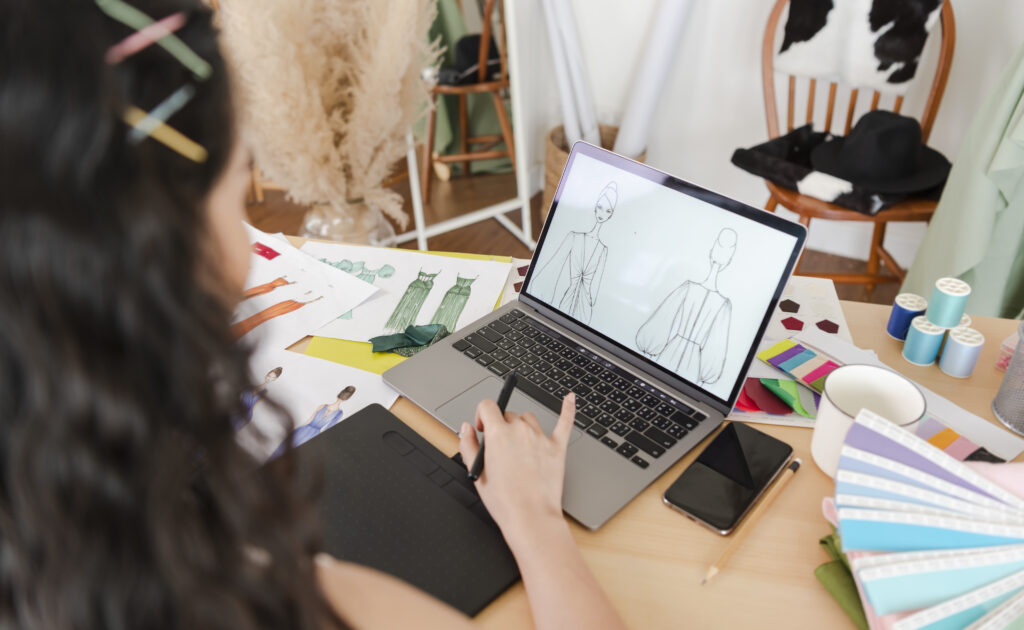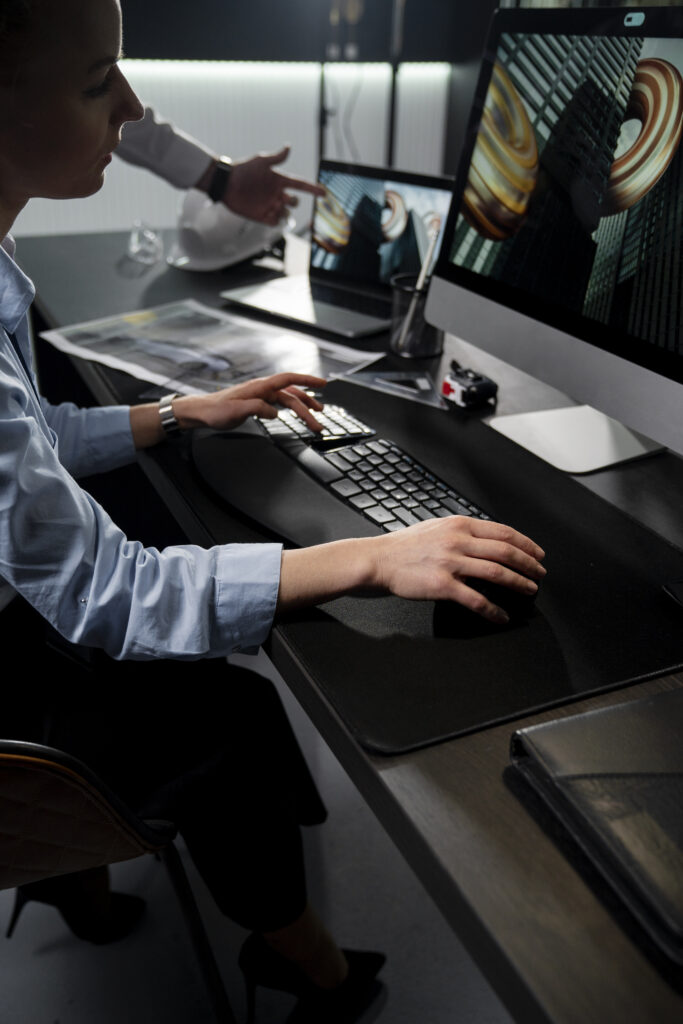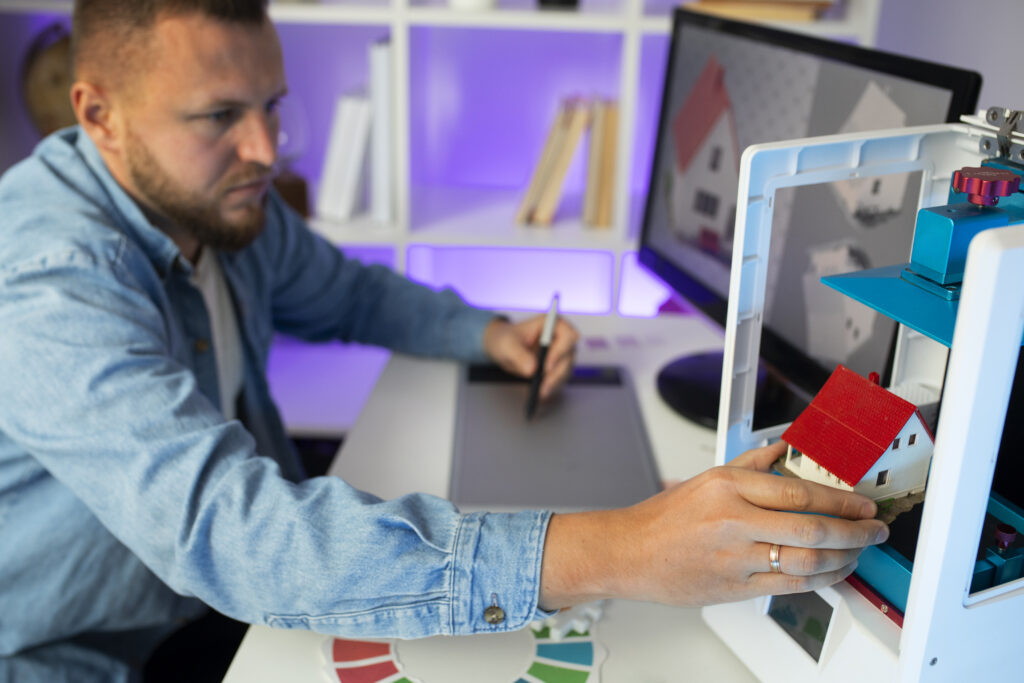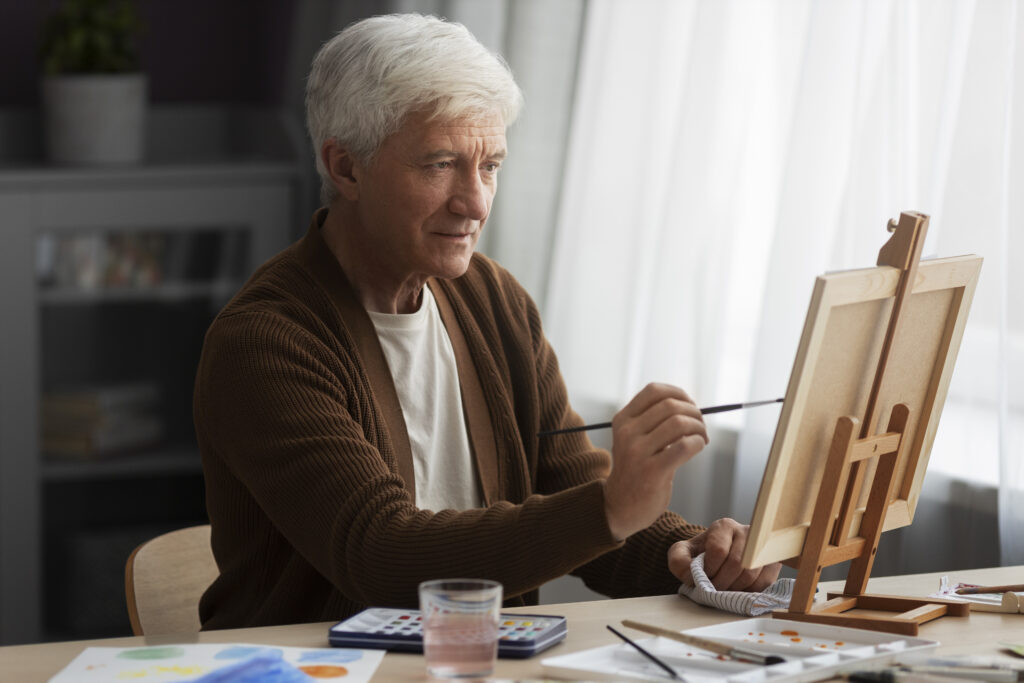Impact of GANs on Digital Art Creation
In recent years, Generative Adversarial Networks (GANs) have increasingly permeated the digital art domain, presenting opportunities and challenges that merit thorough examination.
These sophisticated machine learning frameworks, which pit two neural networks against each other in a dynamic creative process, have given rise to a novel genre of art characterized by its complexity and often startling originality.
The employment of GANs by contemporary artists and technologists has expanded the boundaries of artistic expression and ignited a discourse on the nature of creativity and the role of artificial intelligence in the evolution of art.
As this technology continues to mature, it prompts us to question the implications for traditional artistic methodologies and the very definition of an artist, setting the stage for a profound transformation in the art world that invites both professionals and enthusiasts to contemplate the future of digital creativity.
Key Takeaways
- GANs revolutionize digital art creation by generating authentic-looking images.
- GANs expand the realm of what is possible for creators.
- GANs facilitate the generation of complex and nuanced artworks.
- GANs integrate into artistic workflows, expanding visual expression.
Understanding GANs

To comprehend the transformative effects of Generative Adversarial Networks (GANs) on digital art creation, it is essential to understand their unique architecture, consisting of a generator and discriminator that collaborate adversarially during the training process to produce increasingly realistic data samples.
The generator aims to synthesize data instances—mainly to generate images indistinguishable from genuine artifacts. Conversely, the discriminator’s role is to evaluate the authenticity of the generated samples, effectively distinguishing between authentic and artificial inputs.
The adversarial dynamic is a form of competitive coevolution, pushing both the generator and discriminator toward improved performance. However, this training process has its challenges. Issues such as mode collapse—where the generator produces a limited variety of outputs—and the intricacies of hyperparameter tuning pose significant hurdles. Moreover, the computational demands and the sensitivity to the quality of training data dictate the feasibility and success of GANs in practice.
Despite these challenges, GANs have revolutionized the art world, enabling the synthesis of novel visual content that blurs the line between human and machine creativity. Their continued evolution promises to enrich the domain of digital art further, expanding the horizons of what is possible in visual expression.
GANs Mechanism Explained

At the heart of Generative Adversarial Networks (GANs), two neural networks—the generator and the discriminator—engage in a complex adversarial dance, creating new data samples from random noise and evaluating their authenticity. The generative capacity of GANs lies in the generator’s ability to synthesize novel instances of data that approximate the distribution of accurate data. This productive process is fueled by backpropagation algorithms that adjust the network’s parameters, refining outputs to be increasingly convincing.
Simultaneously, the discriminator functions as a binary classifier, discerning between genuine data and the generator’s fabrications. The discriminator’s acumen is honed through iterative training, enabling more nuanced detection of inauthentic samples. This adversarial setup creates a dynamic where the generator and the discriminator are locked in a continual escalation of capabilities.
The success of this generative mechanism is measured by the generator’s ability to produce data indistinguishable from the real to the discriminator eventually. This breakthrough has propelled GANs into the forefront of digital art creation, where new, authentic-looking images, textures, and styles are reshaping the landscape of creativity and design.
Transforming Artistic Creation

Generative Adversarial Networks (GANs) have introduced a paradigm shift in digital art creation, expanding what is possible for creators. By facilitating the generation of complex and nuanced artworks, GANs are challenging the conventions of traditional artistry and disrupting established creative processes.
As artists and technologists collaborate, GANs are becoming instrumental in unleashing a spectrum of creative possibilities that redefine the boundaries of artistic expression.
Unleashing Creative Possibilities
The advent of Generative Adversarial Networks (GANs) has heralded a new era in digital art. These AI models have redefined generative art by enabling the synthesis of images, videos, and even music, which mirror the complexity of human-made art.
GANs offer artists an expansive canvas for experimentation and originality in their creative pursuits. They have facilitated the creation of standalone digital art and have been instrumental in developing interactive installations. These installations create immersive environments that respond to and evolve with audience interaction.
With tools like GANshare One, artists can generate distinctive digital pieces for monetization through NFTs. This expands the economic landscape of artistry and provides new avenues for artists to showcase and sell their work.
As GANs continue to evolve, they are set to democratize further and innovate artistic creation processes and experiences. The possibilities for digital art are expanding, and artists are embracing this technology to push the boundaries of their creativity.
Disrupting Traditional Artistry
Revolutionizing the realm of traditional artistry, Generative Adversarial Networks (GANs) are at the forefront of transforming artistic creation through their advanced ability to generate complex and varied forms of digital art. By synthesizing images, music, and literature that bear a remarkable resemblance to human-made works, GANs are catalyzing a paradigm shift within creative industries.
Their integration into artistic workflows enables the creation of new images and forms, expanding the boundaries of visual expression. As GANs continue to evolve, they facilitate novel approaches to image synthesis, video editing, and fashion design, among other applications. This generative technology empowers artists to transcend conventional limitations, inspiring unprecedented creative explorations and potentially redefining the essence of art itself.
GANs in Artistic Collaboration

Generative Adversarial Networks (GANs) are at the forefront of establishing novel dimensions in artist-AI partnerships, fundamentally altering the creative landscape.
These collaborations have expanded artistic expressions, transcending traditional boundaries by incorporating AI-driven aesthetics and techniques.
The synergetic relationship between artists and GANs opens new vistas for innovation, where the iterative process of creation and critique is reimagined through the lens of machine learning algorithms.
Artist-AI Creative Partnerships
As artistic mediums evolve, GANs are emerging as collaborative tools, enabling artists and AI to forge novel partnerships that expand the boundaries of digital art creation.
These Generative Adversarial Networks employ a dichotomous structure comprising a generator and discriminator, both neural networks that innovatively apply artificial intelligence to image synthesis. Trained through an adversarial process, GANs proficiently generate new images, notably advancing the potential for style transfer in art.
Their capacity to learn and replicate complex patterns facilitates a symbiotic relationship between human creativity and algorithmic efficiency, leading to unprecedented forms of expression.
Despite challenges like mode collapse and the necessity for meticulous hyperparameter tuning, GANs are progressively refining the collaboration between artists and AI, thereby transforming the landscape of digital art.
Diversifying Artistic Expressions
Generative Adversarial Networks (GANs) have emerged as a pivotal force in the art world, leveraging AI to:
- Innovate Art Forms: By generating realistic images, GANs empower artists to create new styles, blending traditional artistry with computational creativity.
- Imitate and Expand: GANs can mimic the aesthetics of renowned artists, encouraging the creation of new images that push the envelope of visual arts.
- Enhance Artistic Vision: Artists can harness the power of GANs to produce complex and nuanced artworks, augmenting their artistic vision with AI’s analytical capabilities.
These technological advancements generate realistic images and reshape the landscape of digital art, fostering a synergy between human ingenuity and algorithmic precision.
The Hyper-Realism Era
The advent of Generative Adversarial Networks (GANs) in 2014 marked the inception of the Hyper-Realism Era in digital art, characterized by producing artworks that challenge the boundaries between digitally generated images and traditional photography or painting. The capacity of GANs to produce hyper-realistic synthetic data has revolutionized the field, offering artists a novel medium to create images with unprecedented detail and lifelike quality.
The ability to generate realistic images through GANs has enhanced the visual fidelity of digital art and expanded the scope of creative expression. Artworks now exhibit such a high degree of realism that they often elicit emotional responses akin to those triggered by actual photographs or classical masterpieces.
| Emotion | Impact of GANs on Art |
|---|---|
| Awe | Unparalleled image fidelity |
| Intrigue | Blurring lines of reality |
| Inspiration | New forms of visual expressions |
| Reflection | Ethical considerations in art |
In this era, the role of GANs in art creation is both technical and philosophical, prompting artists and viewers alike to contemplate the essence of creativity and the meaning of authenticity in the digital age.
Debating AI Authorship
When considering the role of GANs in art, a pivotal question arises: who can be deemed the author of an AI-generated piece? This debate hinges on several key aspects:
- Data Provenance: GANs are trained on datasets, often amalgamating numerous artists’ works. Through this exposure, the generator network learns to create new data reminiscent of the original artists’ styles, leading to questions about the origin of the creative spark.
- Creative Control: While GANs produce synthetic outputs, the human artist sets the parameters and guides the learning process. Decisions on what data to feed the model and how to adjust the generation process play a crucial role in the outcome, suggesting a partnership between humans and machines.
- Legal Frameworks: Intellectual property laws are yet to catch up with the novel issues presented by AI in art. There is yet to be a consensus or legal standard to clearly define the authorship of GAN-generated artworks, making it a complex and evolving discussion.
Technically, GANs are not created in a vacuum; they require data to learn and parameters set by human intervention. Thus, the AI-generated piece is a product of a collaborative process, yet it challenges traditional notions of artistic authorship and creativity.
Ethical Considerations
Moving beyond the question of authorship, the ethical implications of GANs in digital art creation demand rigorous scrutiny, particularly regarding the authenticity and integrity of artistic expression in the digital realm.
GANs, short for Generative Adversarial Networks, are a form of artificial intelligence (AI) where the generator aims to create data that resembles accurate data. As such, they have become instrumental in synthesizing hyper-realistic images, leading to ethical considerations about the truthfulness of visual media.
The deployment of GANs in producing deepfakes and synthetic media opens avenues for misinformation and deception. This capability to convincingly replicate reality poses significant risks, potentially undermining societal trust. Moreover, GANs could inadvertently entrench biases, mirroring the prejudices in their training datasets and impacting representation and diversity in AI-generated art.
Furthermore, ethical use concerns arise when GANs fabricate art that challenges the distinction between original creations and generated imitations. This blurring of lines extends to the commercial sphere, where the valuation and commodification of AI-generated art, primarily through Non-Fungible Tokens (NFTs), presents complex issues of ownership and economic exploitation.
These dynamics necessitate a thorough ethical framework to navigate the transformative effects of GANs on digital artistry.
GANs Across Industries
Frequently transcending the realm of digital art, GANs are revolutionizing various industries with their capability to generate high-fidelity synthetic outputs. The generative adversarial networks (GANs) field has proven to be an indispensable asset across several domains, demonstrating the versatility and robustness of this technology.
Here are three notable areas where GANs have made a significant impact:
- Healthcare: GANs are being deployed to create synthetic medical images for research and education, potentially improving diagnosis and treatment plans without compromising patient privacy.
- Fashion and Retail: With applications in computer-aided design, GANs enable the creation of virtual prototypes, reducing the need for physical samples and accelerating the design process.
- Entertainment and Virtual Reality: GANs contribute to immersive virtual reality experiences by generating realistic environments and characters, thus enhancing the user’s sense of presence in a digitally constructed world.
As a powerful tool in the ever-evolving technological landscape, GANs are facilitating advancements that were once considered science fiction. Whether refining algorithms to produce more intricate designs in digital art or pushing the boundaries of what’s possible in simulation and training, GANs continue redefining the art of the potential across industries.
The Future of AI Art
The advent of generative adversarial networks ushers in a transformative era for AI art, marked by unprecedented creative possibilities and challenges in the digital domain. As GANs evolve, the focus expands from mere image synthesis to comprehensive creative processes, including text and video generation. Through iterative improvement and adversarial training, GANs are expected to achieve more excellent training stability and conditional control over outputs, enabling a more refined digital art creation experience.
The new applications of GANs stretch beyond static images, influencing dynamic fields such as virtual reality, thus revolutionizing the entertainment industry. This hints at a future where GANs could become instrumental in creating immersive virtual environments, offering more interactive and personalized artistic experiences.
In AI-generated art, GANs facilitate the production of a wide array of outputs, from realistic landscapes to surreal portraits. This showcases AI’s remarkable capabilities in augmenting human creativity and adds a new dimension to the art market. The introduction of models like GANshare One exemplifies this trend, where artists can invest in and utilize shared GAN models to generate and monetize unique digital artworks as non-fungible tokens (NFTs), indicating an emerging synergy between AI artistry and blockchain technology.
FAQs
Can GANs be used to mimic specific artistic styles or emulate famous artists?
Yes, GANs can be trained to mimic specific artistic styles or emulate the styles of famous artists. By using datasets containing artworks from particular artists, GANs can generate digital art with similar stylistic characteristics.
Do GANs contribute to the exploration of new and innovative digital art styles?
Yes, GANs contribute to exploring new and innovative digital art styles. They can generate novel combinations of styles, blend characteristics from different artworks, and push the boundaries of traditional artistic expression.
What challenges do artists face when using GANs in digital art creation?
Challenges may include addressing biases in training data, finding the right balance between AI-generated and human input, and ensuring that the generated content aligns with the artist’s vision. Ethical considerations are also important.
Can GANs be used to enhance the efficiency of the digital art creation process?
Yes, GANs can enhance the efficiency of the digital art creation process by automating certain tasks, generating preliminary concepts, or providing inspiration. This can allow artists to focus more on the creative aspects of their work.
Are there ethical considerations in the use of GANs for digital art creation?
Yes, ethical considerations include addressing biases in training data, ensuring transparency about the use of AI in the creative process, and being mindful of issues related to copyright and intellectual property when using GANs.